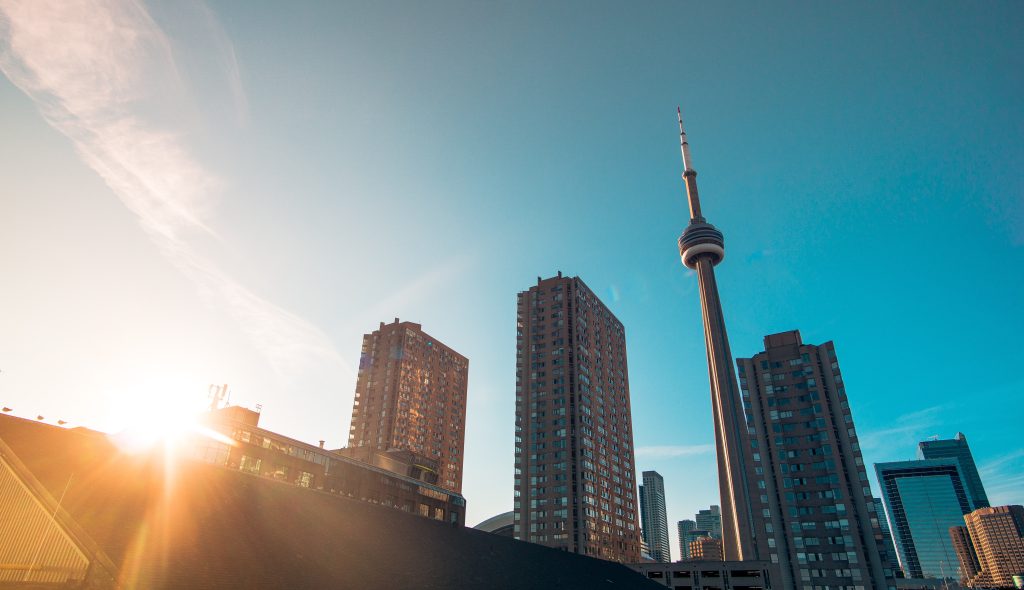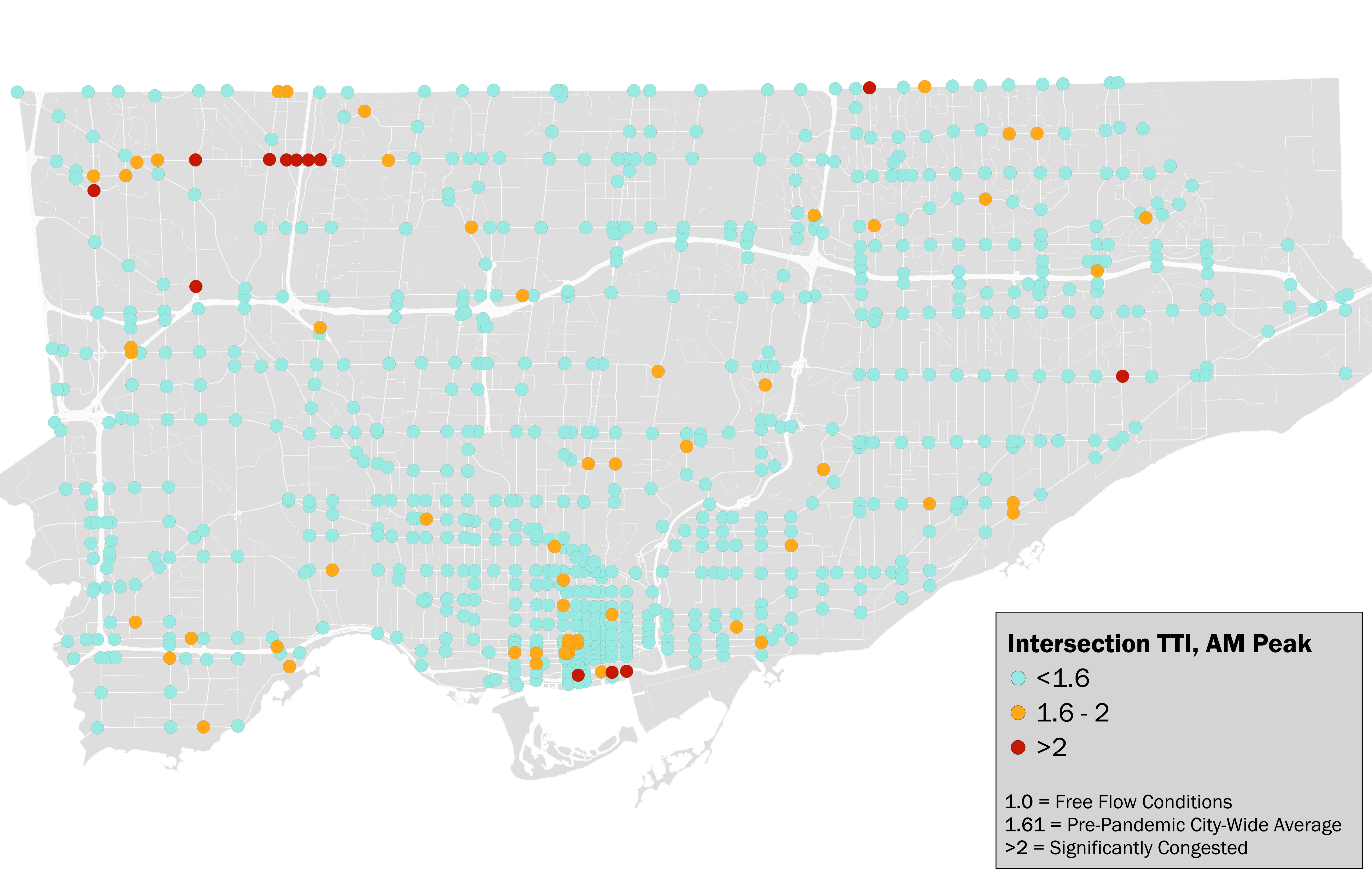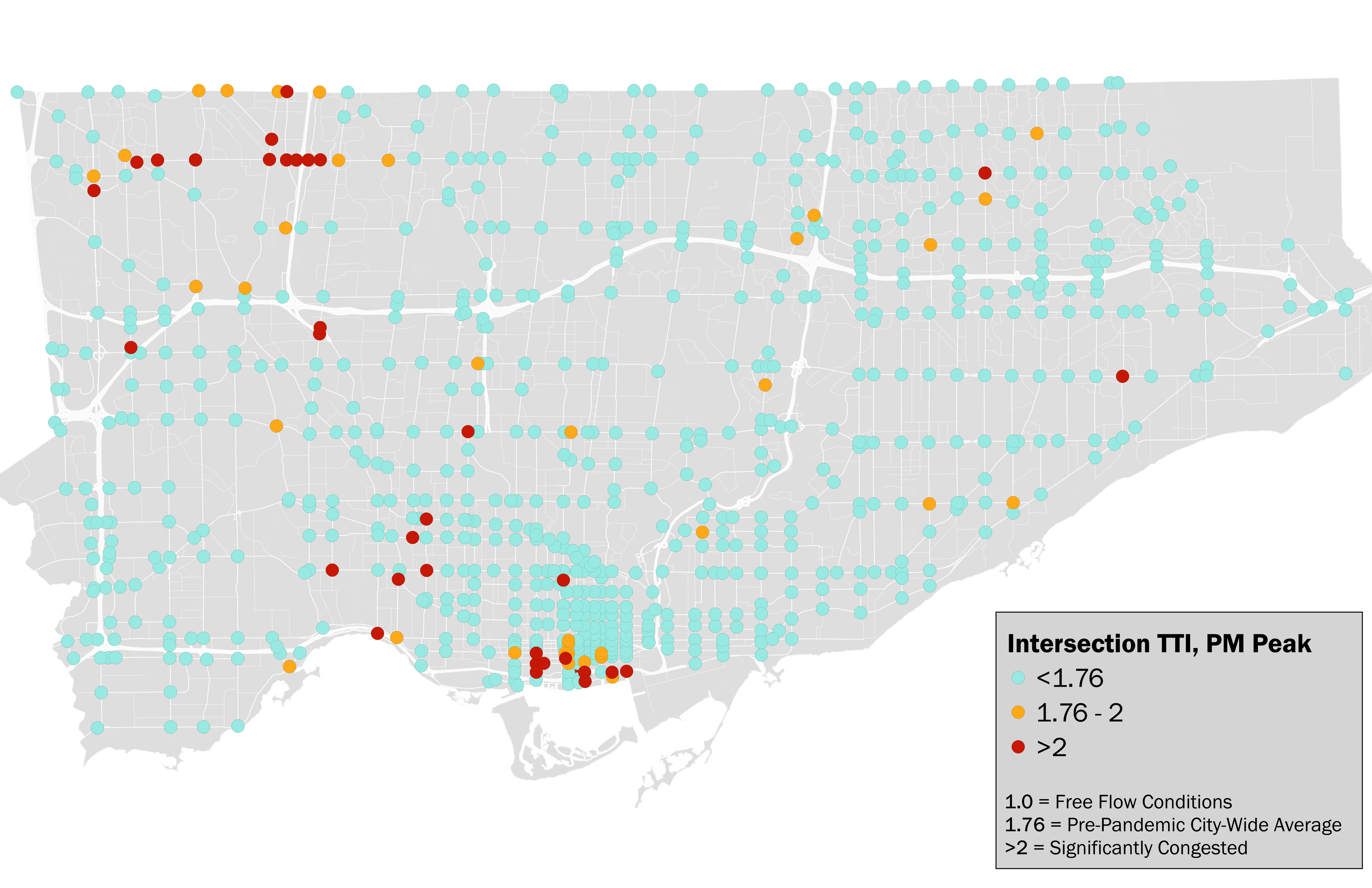Most congested intersections in Toronto revealed as traffic increases to pre-pandemic levels

Posted January 17, 2023 3:07 pm.
Last Updated January 17, 2023 3:22 pm.
The City of Toronto is sharing updated data on the most crowded and busy intersections of the year that was, with maps showing the morning and afternoon peak periods.
A city spokesperson says traffic congestion is measured by travel time index (TTI), indicating the busiest intersections have peak travel times that are most delayed compared to their uncrowded state, such as the middle of the night.
TTI is determined by the average travel time in peak hours to free-flowing travel time. For example, if the average travel time and free-flowing travel time are five and four minutes, the TTI would be 1.25, meaning that your trip will take 25 per cent longer than with no congestion.
With that in mind, here is the list of the busiest intersections in Toronto, with the highest TTI in 2022.
Toronto intersections:
- Lake Shore Boulevard East & Lower Sherbourne Street (Spadina-Fork York)
- Finch Avenue West & Norfinch Drive/Oakdale Road (Humber River-Black Creek)
- Finch Avenue West & 400 South Finch Westbound Ramp (Humber River-Black Creek)
- Finch Avenue West & 400 North Finch Eastbound Ramp (Humber River-Black Creek)
- Finch Avenue West & Signet Drive/Arrow Road (Humber River-Black Creek)
- Lawrence Avenue East & Scarborough Golf Club Road (Scarborough-Guildwood)
- Lake Shore Boulevard East & Bay Street (Spadina-Fort York)
- Steeles Avenue East & Pharmacy Avenue/ Esna Park Drive (Scarborough-Agincourt)
- Islington Avenue & Finch Avenue West (Etobicoke North)
- Lake Shore Boulevard East & Parliament Street (Spadina-Fort York)
Lake Shore Boulevard East and Lower Sherbourne Street near Toronto’s East Bayfront was the most congested intersection in the city, with an A.M. TTI of 2.96, a mid-day TTI of 2.9 and a P.M. TTI of 2.95. That intersection was followed by several in the city’s north end, including four in the Humber River-Black Creek ward.
The city spokesperson says that its congestion data indicates traffic volumes in Toronto have returned to pre-pandemic levels.
RELATED: Hours-long traffic jam on Lake Shore prompts debate over downtown construction delays
“Each of these intersections has different factors that contribute to traffic congestion. These areas may be affected by infrastructure designs that decrease road capacity or by issues related to municipal road work, construction and private development,” the city said.
The city acknowledged that managing congestion at the intersections mentioned above and throughout Toronto is a priority as travel demand “rises in tandem with population and economic growth.”
To address this, the city has formed MoveTO, described as an action plan aiming to manage congestion and build a more resilient, modern and safe transportation system.
Map of intersection congestion peak periods (A.M.)

Photo: City of Toronto.
Map of intersection congestion peak periods (P.M.)

Photo: City of Toronto.








